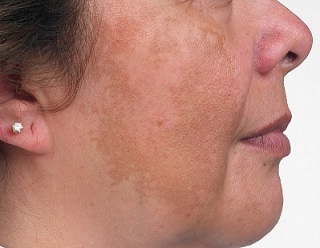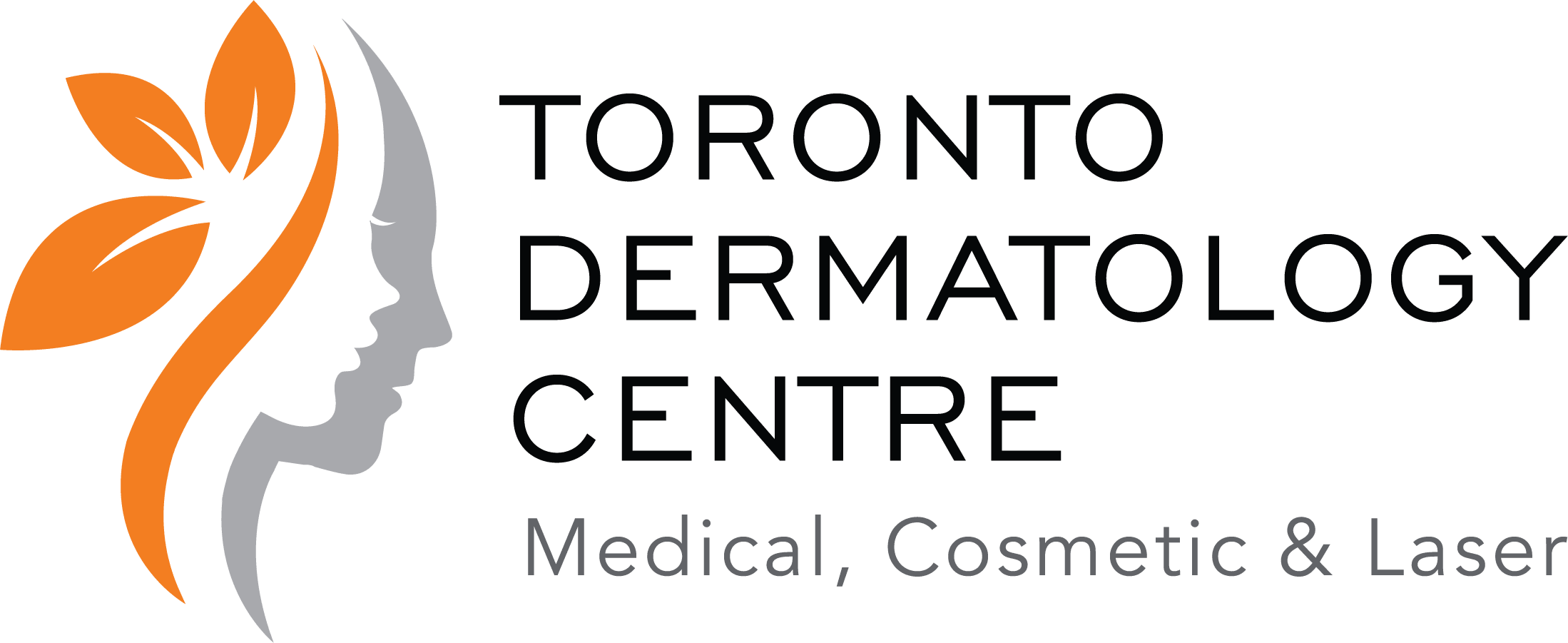One of the most stubborn and mysterious skin conditions commonly seen at Toronto Dermatology Centre is melasma, a condition that leaves lesions of hyperpigmentation on the skin, usually in dense patches as opposed to freckling. Melasma may appear symmetrical, appearing on cheeks, the forehead, upper lip and nose. It is most common in darker skin types although may occasionally show up in lighter skins as well. Melasma is most common in women, due to hormonal factors (pregnancy and taking birth control pills are risk factors), although about 10% of melasma patients are men.
 Genetics can prove to be a factor in some ethnicities, such as Asian or Hispanic, where an abundance of melanocytes are present. In addition to genetics, hormones are the general suggested aggressor that stimulates the onset of melasma. Pregnancy, birth control pills, breast-feeding, or any fluctuation in hormones can induce the onset of melasma for those genetically predetermined for the condition.
Genetics can prove to be a factor in some ethnicities, such as Asian or Hispanic, where an abundance of melanocytes are present. In addition to genetics, hormones are the general suggested aggressor that stimulates the onset of melasma. Pregnancy, birth control pills, breast-feeding, or any fluctuation in hormones can induce the onset of melasma for those genetically predetermined for the condition.
For some, post-pregnancy or cessation of hormone therapy will help the melasma to fade to some degree. This is called transient melasma. Unfortunately, most patients who visit our clinic have been fighting a never-ending battle with melasma for a long time.
Studies have shown that a combination of treatments along with strict sun protection is the best means of reducing most or all of the melasma present on the face. Various topical therapies are often where we start the treatment regime. Products containing hydroquinone, Arbutin, Retinols, Kojic acid, glycolic acid and L- ascorbic acid (vitamin C) will help to suppress the pigment and aid in preventing new pigment from forming.
Chemical peels with a lower acid percentage have been known to fade hyperpigmentation as well. There are also “super peels” such as Dermamelan that help to give a jump start in reducing pigment. I have found that post-treatment, I will either start the patient on an active home care with some of the above mentioned ingredients or begin a secondary treatment of either ProFractional laser resurfacing or TCA peels, along with skin care by ZO or Lytera to be used daily at home. For some patients, BBL photorejuvenation can also be considered.
Melasma can be epidermal, dermal or a mixture of both. The epidermal melasma is the easiest to treat and often doesn’t require laser treatments. However, stubborn melasma has to be treated aggressively and yet gently. Over-treating may cause the pigment to darken. It is essential that the home care for these types of melasma contain anti-inflammatories, as inflammation is a definite contributor to hyperpigmentation.
The pigment of melasma develops gradually and resolution is also gradual. Resistant cases or recurrences of melasma often occur. As a tunable Er:YAG laser, ProFractional laser helps tackle this very significant cosmetic challenge. The intracellular nature of the pigmentation makes it difficult for one treatment modality or agent to arrest the progression of further pigmentation, as well as remove existing pigmentation. Single treatment modalities cannot easily reach all levels of the skin (dermis and epidermis) where the excess pigment exists.
ProFractional laser provides a fractionated option to ablate narrow-diameter channels of skin, covering a fraction of the total treatment area and maximizing comfort by transmitting minimal heat into tissue.
The 2940 um wavelength of the ProFractional laser is significantly absorbed by water, causing most, if not all, of the energy to be used in ablation or vaporization. Stimulated fibroblasts in the treated channels produce new collagen and elastin, leaving surrounding tissue intact to promote rapid healing.
The infrared energy from the fractionated pattern of ProFractional lasers not only removes targeted tissue in melasma-affected skin, but also improves excess pigmentation surrounding the channels via transepidermal elimination.
Treatments that are too aggressive can increase hyperpigmentation, whereas treating more cautiously may take a little longer, but results have shown that improvement can be achieved more readily and safely this way. Each patient should be assessed properly before beginning melasma treatments (e.g. by a dermatologist, the skin experts), therefore getting the appropriate treatment for their specific case. In all cases, mandatory use of a medical grade sunscreen (along with hat, big sunglasses, seeking shade, avoiding mid-day sun, etc.) is, and will always be the most important ingredient towards improvement and prevention of melasma reoccurrence.
~ Sheri Roselle, Medical Esthetician at Toronto Dermatology Centre
